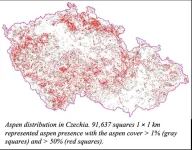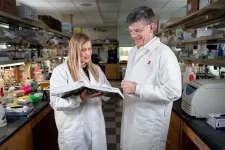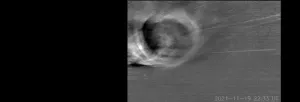(Press-News.org) An overlooked and long-neglected type of forest has vast capacity to rebound, enhancing species diversity and resilience to climate change, according to an international team of forest scientists.
According to new research, published today in the peer-reviewed science journal PLOS ONE, there is ample habitat for the Eurasian aspen, and these environments will continue to be suitable for this “keystone species” as the global climate warms.
“The Eurasian aspen, and aspen species globally, are home to vast populations of other dependent plants and animals,” said the study’s lead author, Antonin Kusbach, an applied ecologist at Mendel University in Brno, Czechia, also known as the Czech Republic, where the team’s research was conducted. “Additionally, aspen systems regenerate and colonize new areas quickly, so these types of forests are ideally adaptive to increased forest disturbances like fire, diseases, insect infestations, and windstorms, that are widely anticipated under climate warming scenarios.”
The scientists conducted a survey of more than four million forest locations using field measurements, remote sensing technology, and sophisticated analytical techniques to better understand historic and potential aspen habitat, termed the “realized niche,” across all of Czechia’s forest terrain, which are similar in make-up to forests throughout central Europe. Aspen forests were once far more widespread across these regions, but commercial forestry, usually favoring monotypic stands of desired conifer species, have altered these habitats.
It doesn’t have to remain that way.
“A course correction in European forest management could help reestablish these amazing forests,” said co-author Paul Rogers, of the Western Aspen Alliance, Ecology Center, and Department of Environment and Society at Utah State University. “Within every acre of aspen forest that returns, plant and animal diversity will flourish.”
The Eurasian aspen, Populus tremula, is one of six species of aspen in the Populus genus, which collectively stretch across much of the Northern hemisphere. Jointly, these species harbor outsized biodiversity relative to surrounding forests. Eurasian aspen spans the breadth of Europe and Asia. The quaking aspen, Populus tremuloides, is the most widely distributed tree in North America, where it is also known as a keystone species, facilitating elevated biodiversity even as climates change.
"It's sometimes said that you could walk from coast to coast in North America and never leave the shade of an aspen tree," Rogers said. "That might not be literally true, but it speaks to the flexibility and adaptability of these forests. Now, we are coming to better understand the great potential aspen have to thrive across Europe, as well."
While re-establishing aspen within the tens of millions of hectares of potential habitat across Europe would be a patently difficult endeavor, it may take little more than a “nudge” to get the process started.
“My personal field observations indicate that after large Norway spruce removal following bark beetle outbreaks, aspen have naturally found their way into the central European forests,” Kusbach said. “So, this might be thought of as a solution that has been hiding in plain sight.”
END
Europe’s forgotten forests could be 21st century ‘biodiversity hot spots’
2024-03-27
ELSE PRESS RELEASES FROM THIS DATE:
Combining epigenetic cancer medications may have benefit for colorectal cancers and other tumor types
2024-03-27
GRAND RAPIDS, Mich. (March 27, 2024) — A pair of medications that make malignant cells act as if they have a virus could hold new promise for treating colorectal cancers and other solid tumors, reports a study published today in Science Advances.
The preclinical research, led by Van Andel Institute scientists, determined how low doses of a DNMT inhibitor sensitize cancer cells to an EZH2 inhibitor, resulting in a one-two punch that combats cancer cells better than either drug alone.
The findings are the foundation for an upcoming Phase I clinical trial to evaluate this combination ...
Reevaluating an approach to functional brain imaging
2024-03-27
A new way of imaging the brain with magnetic resonance imaging (MRI) does not directly detect neural activity as originally reported, according to scientists at MIT’s McGovern Institute. The method, first described in 2022, generated excitement within the neuroscience community as a potentially transformative approach. But a study from the lab of McGovern associate investigator Alan Jasanoff, reported March 27, 2024, in the journal Science Advances, demonstrates that MRI signals produced by the new method are generated in large part by the imaging process itself, ...
Food matters: Healthy diets increase the economic and physical feasibility of 1.5°C
2024-03-27
“We find that a more sustainable, flexitarian diet increases the feasibility of the Paris Agreement climate goals in different ways,” says Florian Humpenöder, PIK scientist and co-lead author of the study to be published in Science Advances. “The reduction of greenhouse gas emissions related to dietary shifts, especially methane from ruminant animals raised for their meat and milk, would allow us to extend our current global CO2 budget of 500 gigatons by 125 gigatons and still stay within the limits of 1.5°C with a 50 percent chance,” he adds.
Putting a price on greenhouse gas (GHG) emissions ...
Land under water – what causes extreme flooding
2024-03-27
There are several factors that play an important role in the development of floods: air temperature, soil moisture, snow depth, and the daily precipitation in the days before a flood. In order to better understand how individual factors contribute to flooding, UFZ researchers examined more than 3,500 river basins worldwide and analysed flood events between 1981 and 2020 for each of them. The result: precipitation was the sole determining factor in only around 25% of the almost 125,000 flood events. Soil moisture was the decisive factor in just over 10% of cases, and ...
Understanding why people sell their kidneys
2024-03-27
A systematic review of 35 years of global medical literature finds a spectrum of reasons why people sell kidneys. The study, by Bijaya Shrestha of the Center for Research on Education, Health and Social Science, Kathmandu, Nepal, finds limited efforts toward mitigating the problem as well as a lack of evidence around the impact of policy and biotechnology. It is published in the open access journal PLOS Global Public Health.
Demand for kidney donation is higher than supply, and it has become one of the most saleable human ...
Researchers turn back the clock on cancer cells to offer new treatment paradigm
2024-03-27
St. Jude Children’s Research Hospital scientists reversed an aggressive cancer, reverting malignant cells towards a more normal state. Rhabdoid tumors are an aggressive cancer which is missing a key tumor suppressor protein. Findings showed that with the missing tumor suppressor, deleting or degrading the quality control protein DCAF5 reversed the cancer cell state. These results suggest a new approach to curing cancer — returning cancerous cells to an earlier, more normal state rather than killing cancer cells with toxic therapies — may be possible. The results were published today in Nature.
“Rather than making a toxic event that kills rhabdoid ...
SwRI leads airborne, ground-based 2024 eclipse observation projects
2024-03-27
SAN ANTONIO — March 27, 2024 —Southwest Research Institute is leading two groundbreaking experiments — on the ground and in the air — to collect astronomical data from the total solar eclipse that will shadow a large swath of the United States on April 8, 2024. SwRI’s Dr. Amir Caspi leads the Citizen Continental-America Telescopic Eclipse (CATE) 2024 experiment, a broad scientific outreach initiative funded by the National Science Foundation (NSF) and NASA, that will ...
Lighting up the future
2024-03-27
New multidisciplinary research from the University of St Andrews could lead to more efficient televisions, computer screens and lighting.
Researchers at the Organic Semiconductor Centre in the School of Physics and Astronomy, and the School of Chemistry have proposed a new approach to designing efficient light-emitting materials in a paper published this week in Nature (27 March).
Light-emitting materials are used in organic light-emitting diodes (OLEDs) that are now found in the majority of mobile ...
Sweet success: researchers crack sugarcane’s complex genetic code
2024-03-27
Modern hybrid sugarcane is one of the most harvested crops on the planet, used to make products including sugar, molasses, bioethanol, and bio-based materials. It also has one of the most complex genetic blueprints.
Until now, sugarcane’s complicated genetics made it the last major crop without a complete and highly accurate genome. Scientists have developed and combined multiple techniques to successfully map out sugarcane’s genetic code. With that map, they were able to verify the specific location that provides resistance to the impactful brown rust disease ...
WISPR team images turbulence within solar transients for the first time
2024-03-27
WASHINGTON — The Wide-field Imager for Parker Solar Probe (WISPR) Science Team, led by the U.S. Naval Research Laboratory (NRL), captured the development of turbulence as a Coronal Mass Ejection (CME) interacted with the ambient solar wind in the circumsolar space. This discovery is reported in the Astrophysical Journal.
Taking advantage of its unique location inside the Sun’s atmosphere, the NRL-built WISPR telescope on NASA’s Parker Solar Probe (PSP) mission, operated by the Johns Hopkins University Applied Physics Laboratory (JHUAPL), captured in unparalleled detail the interaction between ...










